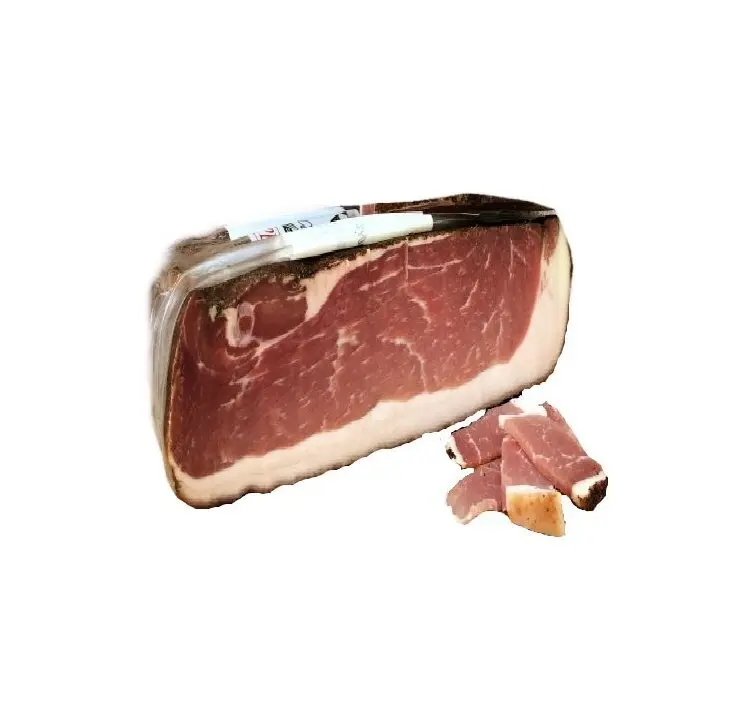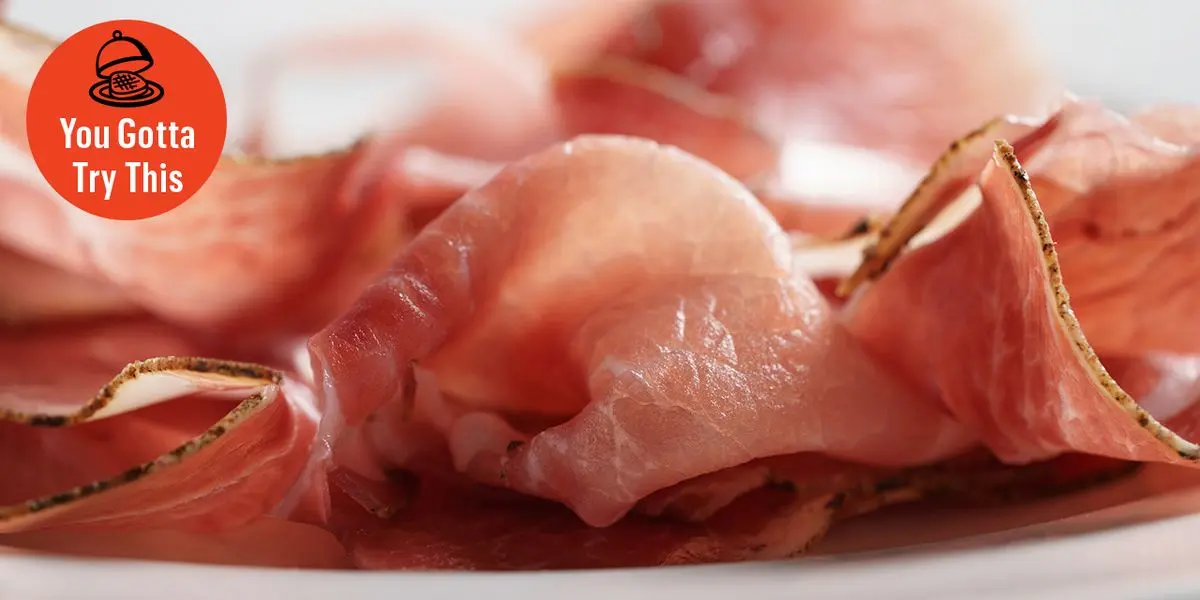Living in New York City, I am lucky enough to be a subway ride away from what is arguably the best place for cured meats outside Italy: Faicco’s, the Italian paradise of pork. The deli has brought high quality meats and specialties to the West Village since 1900, as well as what I contend is the best Italian hero this side of the Atlantic.
But as good as Faicco’s is, it wasn’t until I went to the South Tyrol region of northern Italy that I understood what cured pork can be, and the magic that is speck of the Dolomites.
All this I write with a tinge of guilt. As a former vegetarian (well, pescatarian, really) and unapologetic environmentalist (my Twitter feed is a steady stream of subway rants and calls to save orangutans) it feels wrong to write about, even encourage, such an indulgence. But Italian speck happened, and nothing was the same.
What is Speck?
Speck is uncooked, salted, and smoked pork that’s been aged anywhere from six months to two years. It tastes similar to prosciutto or ham, with a bit more bite than the former but is more delicate than the latter. It’s often served with a dollop of homemade horseradish and pickled cucumbers.
What’s so unique about this meat is that it is produced exclusively in the South Tyrol region of northern Italy, an area where customs and traditions are a true melting pot of German, Italian, and Ladin cultures. Speck produced in the South Tyrol often carries the European Union's special Protected Geographical Indication (PGI) status as “Speck Alto Adige Sudtirol,” verifying that it was produced under strict, time-honored methods.
Smoking pork allowed traditional communities in the Dolomites to utilize and preserve the whole animal, becoming a specialty of the South Tyrol region.
How is Speck Made?
Speck is the most treasured food product of the South Tyrol, a distinctly flavored, smoked, cured ham that represents well the character of Alto Adige’s cuisine. To produce speck, after three weeks of dry curing, the hams are gently smoked, using low-resin wood at a carefully controlled low temperature. The smoking process is gradual and conducted over a period of several months, allowing the flavor to penetrate through the meat. The crisp Alpine air also plays a role in the flavor profile, as the aging process is conducted in ventilated rooms that allow the local atmosphere to circulate around the meat, forming a thin layer of whitish mold that mellows and balances the flavor.
Tips for Selecting and Serving Speck
If you have the opportunity to select and bring back speck from the Dolomites, there are a few tips to keep in mind:
- Go for the traditional speck, with just the right amount of fat and aromatic smoke, which pairs well with any cheese plate.
- Opt for freshly cut and vacuum-packed speck, as it will stay fresh for longer periods.
- Avoid refrigerated speck if you plan to bring it home, and choose one of the dry, non-refrigerated varieties.
When it comes to serving speck, thin slices are preferred and can be paired with a meat-slicer. If you don't have a meat-slicer, cutting with a knife or using it in customary Dolomiti dishes like knodel (savory dumplings) are also great ways to enjoy this delicacy.
How to Use Speck in English Food
In the Südtirol region, speck, bread, and wine form a holy trinity that is the most basic of meals. It is also easy to incorporate speck into your kitchen. Enjoy it sliced thin on a plate with accompaniments like local cheese, pickles, and fruit. Crumbled speck can be crisped in a pan, mixed with cream and fresh herbs for a savory pasta sauce, or used in salads, frittatas, and other dishes.
You can find speck in most Italian pork stores and salumerie, or purchase it online from reputable sources that import authentic speck from Alto Adige.

Your Privileged Slice of Dolomites
Smoked speck from the Dolomites is a unique and flavorful delicacy that represents the customs and traditions of the South Tyrol region. Whether enjoyed on its own or incorporated into various dishes, the experience of savoring this indulgence is truly unmatched. So, if you have the opportunity to bring home a slice of the Dolomites, make sure to savor and share the magic of speck with your loved ones.
Don't miss out on this opportunity to indulge in the wonders of Italian cured meats. Buy authentic speck from the Dolomites today and embark on a flavorful journey unlike any other.
Frequently Asked Questions
- What is the difference between speck and prosciutto?
While both speck and prosciutto are cured meats, they have different taste profiles. Speck has a bit more bite than prosciutto but is more delicate than ham, offering a unique balance of flavors. Additionally, speck has a smoky flavor due to the smoking process, while prosciutto is often more delicately seasoned. - What is the best way to serve speck?
Speck is best served thinly sliced, either on its own or as part of a charcuterie board. It pairs well with cheese, bread, and pickled vegetables. Alternatively, speck can be used in cooking, adding depth and flavor to dishes like pasta, salads, and frittatas. - Where can I buy authentic speck from the Dolomites?
Authentic speck from the Dolomites can be purchased at Italian pork stores, salumerie, or through reputable online sources that specialize in imported Italian cured meats.
Summary
Smoked speck from the Dolomites is a unique and flavorful cured meat produced exclusively in the South Tyrol region of northern Italy. It is uncooked, salted, and smoked pork that’s been aged for a minimum of six months to develop its distinctive taste. Speck tastes similar to prosciutto or ham, with a smoky flavor and a bit more bite. It is often served with horseradish and pickled cucumbers. Speck is made using traditional methods and is a true representation of the customs and traditions of the South Tyrol region. It can be enjoyed on its own, as part of a charcuterie board, or incorporated into various dishes. Finely sliced speck pairs well with cheese, bread, and pickled vegetables. Whether eaten at home or brought back as a souvenir, smoked speck from the Dolomites is a culinary delight that showcases the flavors of the region.
If you want to know other articles similar to The magic of smoked speck from the dolomites - a delightful culinary delight you can visit the Cured meats category.


Related Articles